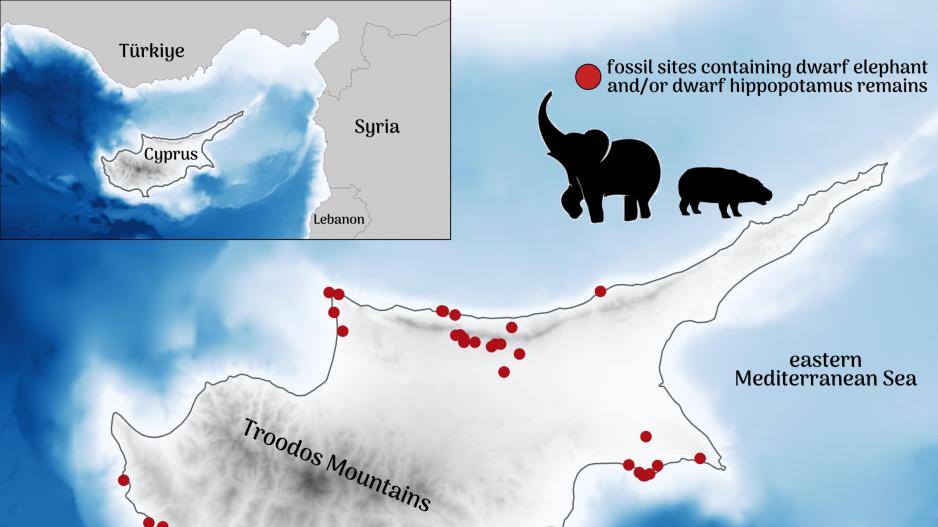Paleolithic Hunters in Cyprus Linked to Megafauna Extinction
New Research Reveals the Role of Early Humans in the Disappearance of Dwarf Hippos and Elephants in Cyprus
Scientists have uncovered a mystery surrounding the extinction of dwarf hippos and dwarf elephants, which once roamed the picturesque landscape of Cyprus before the arrival of the island's first human inhabitants.
During the Late Pleistocene, Cyprus was home to two large fauna species—the 500 kg dwarf elephant (Palaeoloxodon cypriotes) and the 130 kg dwarf hippo (Phanourios minor). However, both species disappeared shortly after humans arrived on the island around 14,000 years ago.
A study, funded by the European Regional Development Fund and the Republic of Cyprus through the Research and Innovation Foundation (RIF) - MIGRATE project -, found that Paleolithic hunter-gatherers in Cyprus likely drove the dwarf hippos and elephants to extinction within less than 1,000 years. The research, led by Professor Corey Bradshaw of Flinders University in Australia, challenges previous theories that a small human population couldn’t have caused such rapid extinctions.
The researchers used mathematical models that combined data from paleontology and archaeology to explore whether Paleolithic hunter-gatherers were responsible for the extinction of these species due to their hunting practices.
Professor Bradshaw, alongside Drs. Theodora Moutsiou, Christian Reepmeyer, Frédérik Saltré, and Stefani Crabtree, used data-driven approaches to study how the rapid human settlement on the island impacted the extinction of these animals soon after their arrival.
The models included detailed reconstructions of human energy needs, dietary habits, prey selection, and hunting efficiency. The findings suggest that the estimated 3,000 to 7,000 hunter-gatherers likely inhabiting Cyprus at the time may have been responsible for the extinction of the island's megafauna.
"Our results provide strong evidence that early human populations in Cyprus were at least partially responsible for the megafauna extinctions during the Late Pleistocene and early Holocene," says lead author Professor Corey Bradshaw. "The critical factor in the extinction risk for both species was the proportion of edible meat they provided to the early humans on the island."
Dr. Moutsiou adds, "Cyprus offers an ideal set of conditions to examine whether the arrival of human populations led to the extinction of megafauna. The island's isolated environment provides a window into the past through our data."
Previous research by Bradshaw, Moutsiou, and their collaborators indicated that large groups of humans, ranging from hundreds to thousands, could have reached Cyprus in two or three main migration events within less than 1,000 years.
The research, titled "Small populations of Paleolithic humans in Cyprus hunted endemic megafauna to extinction," was published in the Proceedings of the Royal Society B (291: 20240967).
The MIGRATE project is led by Dr. Theodora Moutsiou at the Archaeological Research Unit of the University of Cyprus.






